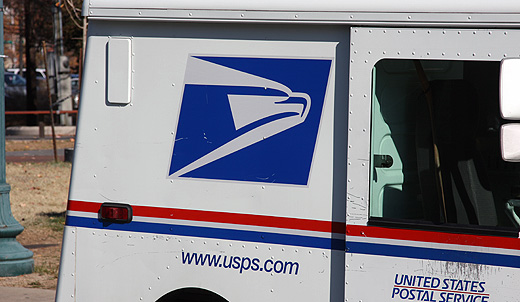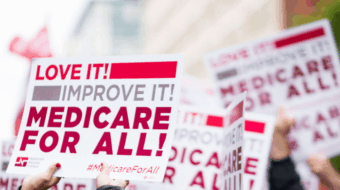
“When the post office is closed, the flag comes down. When the human side of government closes its doors, we’re all in trouble.” Senator Jennings Randolph (West Virginia) 1958-85
For the post office the end game is on. This year the post office will close half its processing centers. By late spring a first class letter will take 1-3 days longer to arrive at its destination. By the end of this summer Saturday delivery is scheduled to end. Over the next year the post office plans to close over 3,000 local post offices while slashing some 220,000 of the its 650,000 employees.
How did we come to this place? In retrospect, it is easy to distinguish three discrete stages in the 221-year life of the post office.
Stage 1: The Post Office has a Broad Public Mandate
The first stage began in 1792 when President George Washington signed legislation making the United States Post Office a Cabinet-level department. It was a public institution with a clear mandate: to enable universal low cost access to information. In its early years this led it to initiate free and low cost delivery of newspapers and eventually, to offer a special rate for periodicals and books.
The post office helped tie the country together physically as well as intellectually. Post roads were essential to the early development of the country. Rural free delivery, established in the late 19th century, spurred improvements in roads and bridges since the post office would not offer service where roads were bad. In the 20th century mail contracts underwrote the embryonic aviation industry
In the 1820s, when private companies began charging a handsome fee to deliver information faster, enabling cotton speculators to make a killing on the difference in prices at the docks of New York and the plantations of Alabama, the post office responded by establishing its own express mail service. The private sector complained. A Congressional investigation concluded “(T)he Government should not hesitate to adopt means … to place the community generally in possession of the same intelligence at as early a period as practicable.
In the 1840s, when the private sector began siphoning off the most profitable mail routes, leaving to the post office only money losing routes, Congress gave the post office a monopoly, enabling it to dramatically reduce the price of postage and initiate free door to door delivery in cities. In 1858 the first mailboxes appeared on street corners.
At the end of the 19th century, when private parcel companies began treating their customers badly, the post office introduced parcel post. The competition resulted in reduced prices and improved customer service.
In the 1890s and early 1900s financial panics and the closures of hundreds of banks led the post office to introduce postal savings banks. At their peak after World War II postal banks had over 4 million accounts and deposits exceeding $3.3 billion.
Stage 2: The Post Office Becomes a Public-Private Institution
But after World War II the post office’s inability to borrow money and invest long term coupled with the dramatic increase in the volume of mail put an increasing strain on its system. In 1966 the mail system in Chicago literally collapsed under an avalanche of mail. Which led LBJ to appoint a commission to study the future of the post office. The commission’s chairman, retired CEO Frederick R. Kappel, envisioned a more corporatized post office. Indeed, in testimony before Congress Kappel revealed his ultimate goal, “if I could, I’d make (the post office) a private enterprise … and the country would be better off financially. But I can’t get from here to there.”
In the l950s low paid postal workers often moonlighted to make ends meet. It took 21 years for an entry-level worker to reach the maximum wage level. Strikes were illegal. Workers demonstrated, lobbied and even held prayer services to publicize their plight.
In 1970 Congress voted itself a pay raise while stalling postal wage increases, sparking a wildcat strike by letter carriers in New York City. Other postal workers honored the picket lines and the strike spread throughout the nation. President Nixon sent in 25,000 National Guard and Army troops to attempt, unsuccessfully for the most part, to sort and deliver the mail.
The Postal Reorganization Act of 1970 was a compromise between management and labor. Unions were given the right to collectively bargain over wages and hours and working conditions for the first time. Wages increased significantly. For the first time, postal work became a middle class job for hundreds of thousands, many of them minorities.
For management the Act gave the new quasi-public corporation now called the United States Postal Service (USPS) the right to borrow money and make long-term investments. In return Congress eliminated taxpayer subsidies, which amounted to 25 percent of the budget in 1971 (about $18 billion in current dollars) and demanded the USPS act more like a business.
Largely as a result of huge capital improvements, productivity soared. In 1966 Fortune Magazine credited USPS with improving its service more than any other company or agency in America. In 1997 audits by Price Waterhouse found on time delivery at 92%. The postal service was by far the most popular public agency. And between 1995 and 1997 postal operations produced a surplus of $4.6 billion.
But the tension between the public mission of the post office and the demand that it act more like a business, continued to grow. Management tried to close post offices and raised the possibility of ending Saturday service as early as the 1980s, leading Congress to pass laws forbidding the latter and significantly restricting the former. Under President Clinton, the Postal Service began contracting out services. Today contracts comprise about 20 percent of its operating budget or $12 billion.
In 2000 the USPS began a formal partnership with FedEx and later UPS. FedEx provides air service for USPS parcels domestically as well as providing international logistics. In 2011 Alan Robinson Executive Director of the Center for the Study of the Postal Market determined that the USPS delivers 30.4 percent of FedEx ground shipments. The USPS Fed Ex partnership is known as SmartPost. The USPS UPS partnership is known as UPS Basic or UPS Mail innovations. These may be the fastest growing parts of their businesses.
Stage 3: The Dismantling of the Post Office
The third and current part of the life of the post office began in 2006 with the passage of the highly misleadingly titled Postal Accountability and Enhancement Act.
A bit of background is necessary to understand this historic piece of legislation. In 2001 the GAO placed the Postal Service on its High Risk list because of concerns about its economic future given the poor management labor relations and increased competition from electronic mail. At the request of Congress and the GAO the Office of Personnel Management (OPM) conducted a review of the Postal Service’s liability to the Civil Service Retirement System.
Almost everyone expected OPM to discover huge liabilities. Instead, it concluded the USPS had overfunded its pension plan by more than $70 billion. In 2003 the GAO raised the estimated overfunding to more than $100 billion.
In a sane world the USPS would have been able to use these funds to expand services, pay down existing debt, and invest in new technology. But Washington is anything but sane. The USPS is considered part of the unified budget used for scoring purposes to estimate any legislation’s impact on the deficit. If the USPS were to tap into its surplus funds it would increase the overall federal deficit. For three years Congress debated what to do. Finally, in 2006 it passed a law that requires the Postal Service to pre-pay its health insurance fund by depositing an additional $5 billion a year for the next 10 years into the insurance fund to offset for the phantom accounting deficit under the unified budget. No other public or private agency is required to do anything remotely comparable.
In 2007, unsurprisingly, the USPS suffered a $5 billion deficit. Today that deficit is over $20 billion and is used to justify the death of the post office by amputation of its work force, its processing centers, and its local offices.
The 2006 law also specifically prohibited USPS from offering new products that would create “an unfair or otherwise inappropriate competitive advantage for the Postal Service…”
Elaine C. Kamarck of Harvard Kennedy School of Government has observed the essential contradiction in Congress’s attitude toward the post office from the very beginning of its new life as a corporation. “Congress wants it to be self-sufficient but doesn’t want it to make money.”
For example, in the mid-1970s the post office was told to remove copy machines from post offices under pressure from lobbyists representing office equipment stores who feared that USPS was taking away its business. Later when the USPS initiated a “Pack and Send” service, the outcry from Mailboxes Etc. and other private packing stores successfully challenged the service. Years later, when Internet shopping took off, the delivery of packages to individual households should have resulted in a dramatic increase in USPS business. But parcel shipments were generated by large organizations and the USPS was not allowed to negotiate discounts and thus lost business. It was forbidden by law from lowering prices to get more business. This resulted in the entirely incredible situation in the 1990s where the United States Government negotiated an agreement for the delivery of U.S. government package services with Fed Ex because the USPS was not allowed to negotiate for lower prices!
Today the strongest force in shaping the future of the postal service, aside from Congress, is the bulk mailers. Indeed, bulk mailers are formally represented in the USPS through the Postmaster General’s Mailers Technical Advisory Committee. Bulk mailers don’t care about post office closings because big mailers present their mail at Bulk Mail Entry Units. Saturday delivery is not a major concern either because advertising mail would do fine with even three day delivery. Nor do they care about having a blue collection box on every corner, half of which have disappeared in the past 20 years.
What bulk mailers do care about is price. They receive huge discounts for pre-sorting that is far in excess of what the postal service saves by receiving mail pre-sorted.
Where do we go from here?
So here we are, at the end game. Few any longer are even talking about saving the post office as is. Fewer still are talking about resurrecting the post office as an institution with a broad public mission. The debate now focuses on how many parts of the post office we can lop off.
Kevin A. Hassett the director of economic policy studies at the American Enterprise Institute has written, “The Postal Service owns or operates 33,000 facilities nationwide and owns 219,000 vehicles. If we were to auction it off to private investors, the bids would likely be enormous.”
Tad Dehaven of the Cato Institute insists, “The one size fits all model where you have six days delivery to every home in the country at a fixed price just doesn’t make any economic sense. What I envision is eventually consumers and customers dictate what they want and entrepreneurs figuring out how to satisfy those wants and needs.”
The National Academy of Public Administration will issue a report this spring on what it calls a Thought Leader proposal submitted in January. The 8-page paper urges the post office to be engaged only in last mile delivery and pick up. All other parts of the post office would be sold to private companies. Among the four signatories to the paper, astonishingly, is the Director of Advocacy of the Atlas Institute, dedicated to promoting the writings of Ayn Rand
The post office can and should be saved, but doing so will require a massive grassroots and lobbying effort. It is an effort that could cut across class and race and geography, cutting across rural Republican and big city Democratic districts. Such an effort could educate the American public about five key issues.
First, savings from cutting back postal services are largely illusory, even if we use the narrow cost-benefit analysis used by the USPS. In 2008 the GAO found that the USPS had no way to measure savings from contracting out. Ending Saturday delivery will not save nearly the amount of money the USPS predicts. There are alternatives to closing processing centers that achieve comparable savings.
But we should argue for a wider cost-benefit lens. Remarkably, the post office does not need to take into account the actual cost to the local community of closing a local post office! It does not have to take into account the increased out of pocket costs for people who have to travel longer distances, often on dangerous roads in the winter. The only cost benefit analysis that did bring these community costs into the equation concluded that the out of pocket costs to the community exceed the internal savings to the post office even in the worst-case scenario.
Second, the deficit is illusory. Over 80 percent of the deficit is a result of a phantom accounting system that imposes on the USPS an unprecedented, unparalleled and unfair financial burden.
Third, the post office remains a world-class institution and a remarkable bargain. A first class letter in the United States costs 20-75 percent less than in countries a fraction of our size, like Austria, Germany, Norway, Great Britain, Italy.
Fourth, the universal infrastructure of the post office is of enormous value and could be the foundation not only for it to provide increased services but also to compete with the private sector if it were allowed to do so using the same marketing and pricing tools the private sector uses.
Fifth, the post office plays an important unquantifiable part in American life. In rural areas, the local post office may be the only community gathering place remaining, a place to meet one’s neighbors and share truly local needs and news. In a nation where more than one in five votes are cast by mail and in some states mail ballots have to be received by the close of polls, closing post offices can significantly burden some groups. In Nevada, for example, about half of the 27 Indian tribes rely heavily on the post office to register and to vote and the closure of a post office can effectively strip them of that right.
Closing post offices and delaying the delivery of mail places a significant burden on the most vulnerable of us.
William C. Snodgrass, owner of a USave Pharmacy in North Platte, Nebraska, talked about the end of next day first class delivery to local areas. His store mails hundreds of prescriptions a week to residents in mostly rural areas of the state that lack local pharmacies. If first-class delivery were lengthened to three days and Saturday mail service also were suspended, a resident might not get a shipment mailed on Wednesday until the following week.
“A lot of people in these communities are 65 or 70 years old, and transportation is an issue for them,” said Snodgrass. “It’s impossible for many of my customers to drive 100 miles, especially in the winter, to get the medications they need.”
The Post Office can still be saved. But the grave has been dug. The coffin has been built. And funeral music is in the air. Only the most aggressive effort by the AARP, the NAACP, Consumers Union and other affected constituencies can save this most public of all public institutions.
David Morris is director of The Public Good Initiative at the Institute for Local Self-Reliance. This article originally appeared at the ILSR website and is reposted by permission of the author.
Photo: Ben Skirvin/WFIU Indiana Public Media CC BY-NC 2.0










